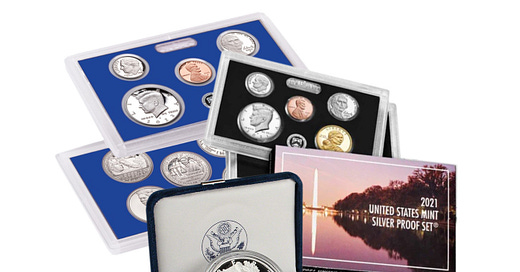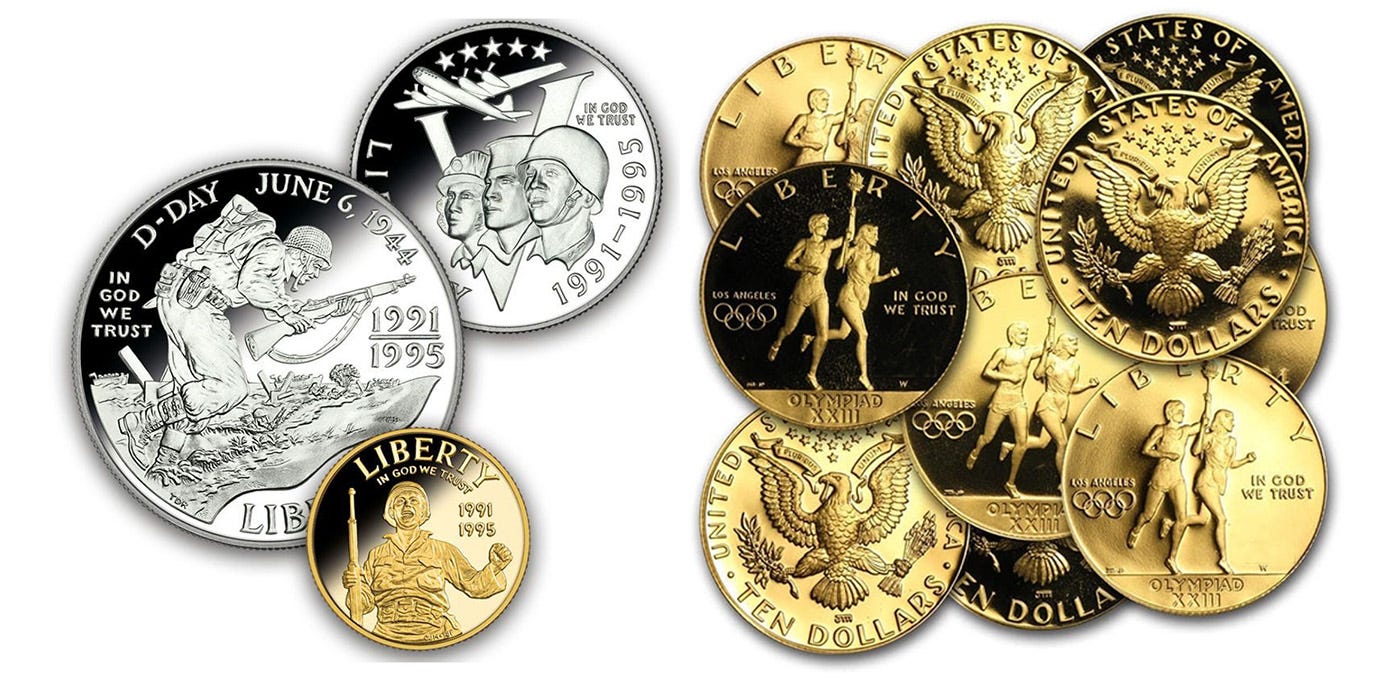Many people succumb to the hard-sell tactics of government mints. The US mint is particularly forceful in its advertising. “Buy this beautiful set now as a gift for your grandchildren. Soon, it will be very valuable.” It turns out, in this case, “soon” means about 4 generations. For instance, proof sets purchased during the 1960s are now just starting to rise a few dollars above inflation.
Modern mint products are exceedingly gorgeous, and that is the ONLY reason you should buy them. They are superb examples of the numismatic craft. Collect them for that reason only: beauty. Don’t think you are going to make a killing saving them and re-selling them someday. That’s not going to happen!
Look at these beauties! There are plenty more just as beautiful.
In addition to their inherent beauty and eye appeal, modern mint products are housed in exquisite Original Government Packaging (OGP). The packaging is sure to keep them always beautiful and appealing, but the hard truth is, with rare exception, modern mint products are not worth very much compared to their high initial cost. For instance, US Mint “proof sets” and “mint sets” (mint sets are also known as “uncirculated sets”) have high-quality examples of each type of circulating coin. These sets are worth about $8 each today. That’s a big let-down from the high initial price of $30 or more.
To figure the value of a collection that has proof sets and mint sets of circulating coins, count the number of sets in the collection and multiply by $8. The $8 figure is true for sets of coins that have no precious metal content. However, if you have “silver proof sets” or similar silver or gold commemorative coins, they are not circulating coins and are worth their weight in silver and gold, which can be substantial. Their value, however, still wanes compared to their high initial cost.





For a collector, "uncirculated" is more prized; for we accumulators with an occasional interest in coins, for me, anyway, the more circulated, perhaps the dirtier, the better, because that implies the coin is real and has a real history. An exception would be if the coin was left uncirculated for it's monetary value.
I don't believe in gold, but if talking gold, rather than coin, there is the *half trillion* in gold sitting in the U.S. Treasury "deep storage gold" held in Fort Knox, West Point, and Denver, held not for any value-in-use for gold, but under a monetary theory. The coins discussed in the following link (at least appear--assuming also it's not just repetition of an urban legend) also not to have been accumulated for their value as collectables, but probably for either the gold-as-money paradigm of the day, or simply for their *real value*, as currency: https://www.numismaticnews.net/archive/european-hoard-made-double-eagle-attainable.
This is not to diss coins as collectibles, but rather to deepen the discussion to various points of view on coins. Although, my own five-subscriber Substack, "Hard Currency..." is not about coins at all, but about money, so I *am* comparing apples to oranges a bit, here.